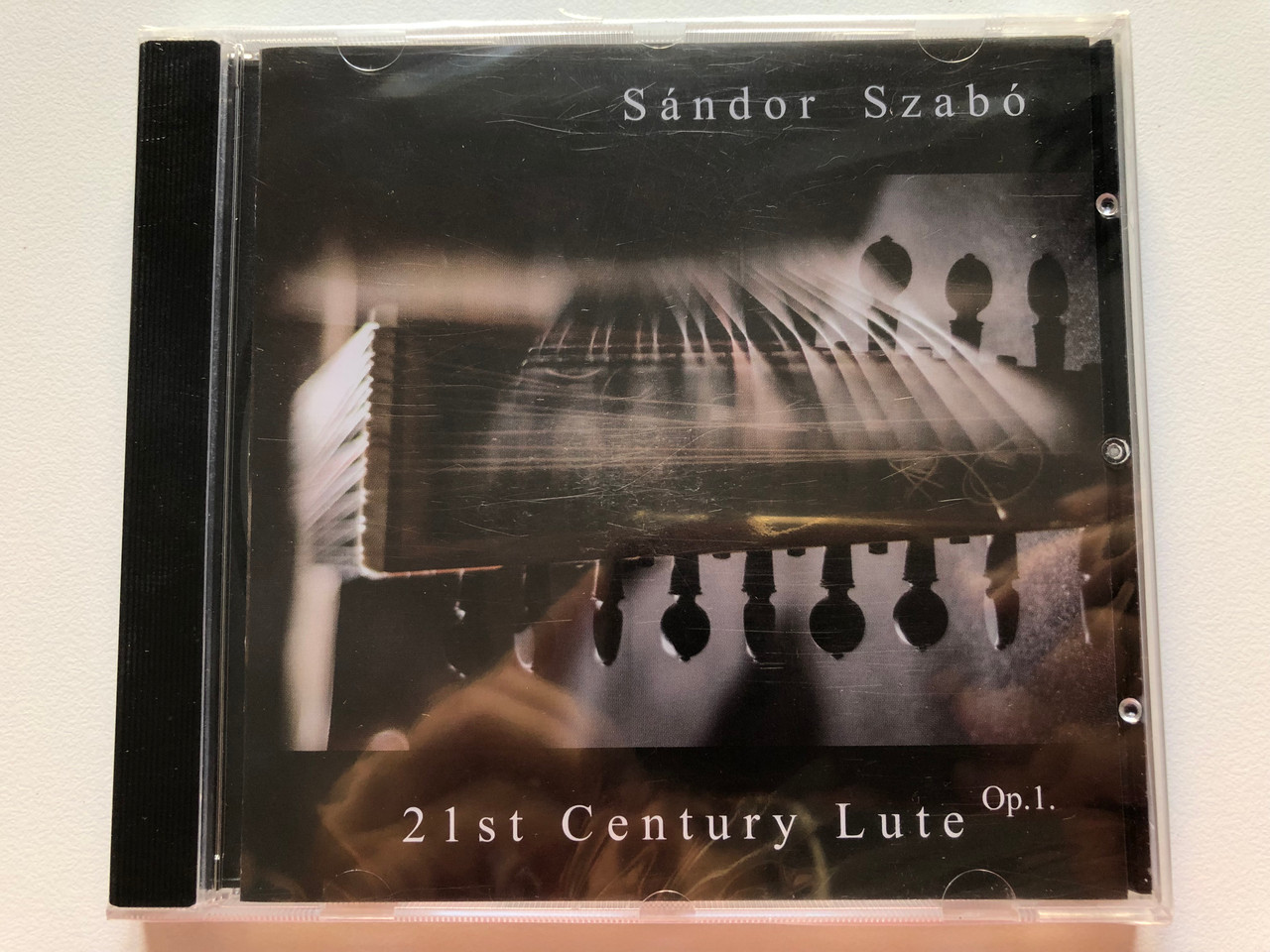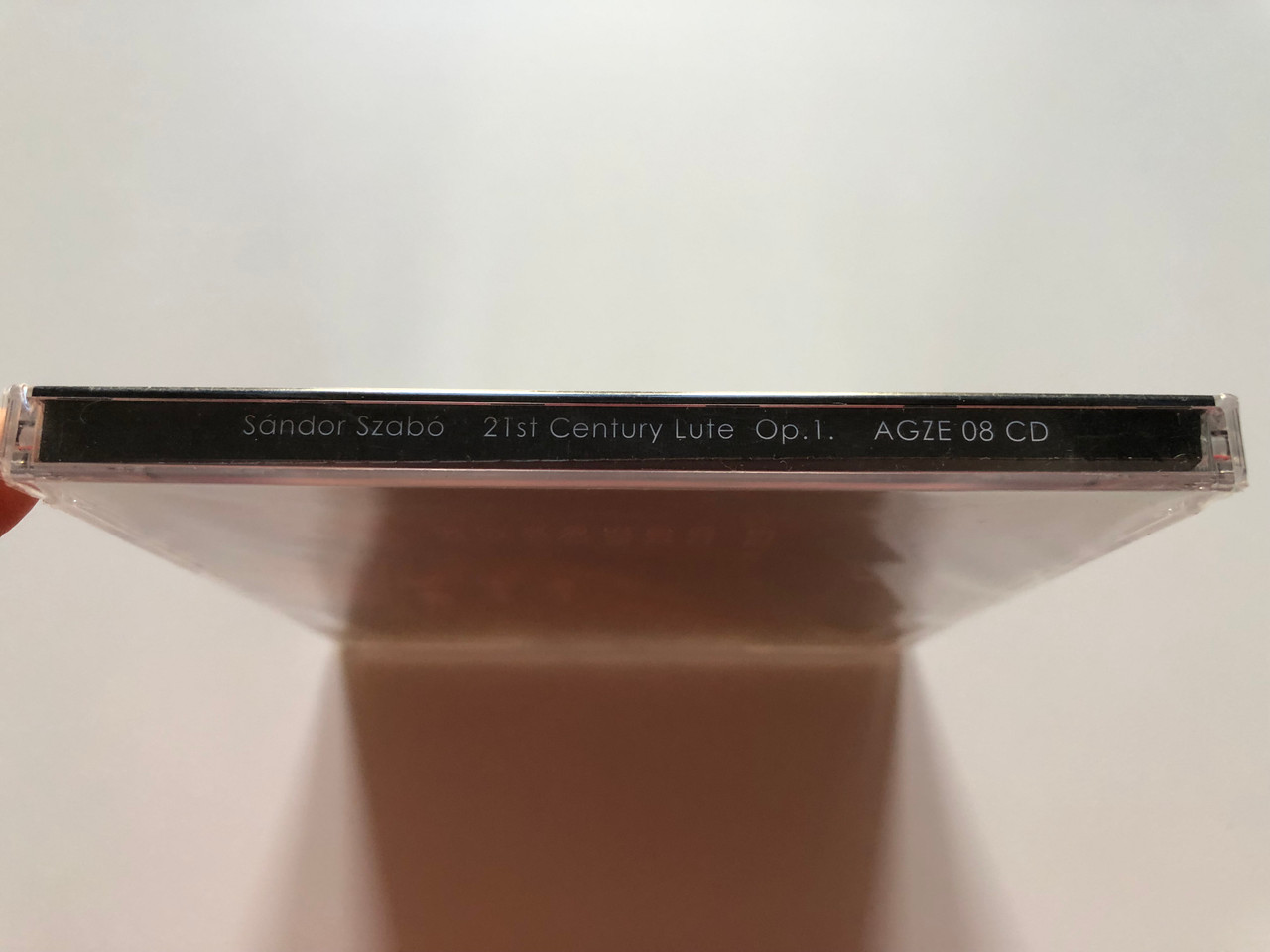Description
Sandor Szabo - 21st Century Lute Op. 1 / AGZE Audio CD 2017
UPC 5998282109373
AGZE 08 CD
Made in Hungary
Instruments
- 16-string classical guitar
- Baritone guitar
- Classical guitar
- Guzheng
Bio
Sándor Szabó......guitar artist, composer, sound designer,independent musicologist, auther . Born in 1956 in Törökszentmiklós, Hungary, he started his studies with a private teacher of classical guitar. After trying different styles from the middle of the seventies, he began to focus on improvisation and composition. His career started in 1980. From the beginning of his carreer he belongs to the exotic players and composers. In his compositions he blends the Far-Eastern music with the Hungarian folk traditions in an improvised context. He plays all kind of guitars, ouds, guzheng,esraj. He soon became known internationally with his original style, modern pieces, and deep spirituality. His music can be heard on more than 60 records, which has been released in England, USA, Italy, Germany, Venezuela, Norway and Hungary.
He collaborates in several duo projects with such artists like Kevin Kastning (US), Balázs Major (Hungary), Veronique Gillet (Belgium), Roland Heidrich(Hungary), Claus Boesser Ferrari (Germany), Edoardo Bignozzi (Italy), Dean Magraw (US), Juan Gaspar (Mexico), Michael Manring (US), Claus Boesser Ferrari (Germany), Ralf Gauck (Germany) Alex De Grassi(US),, Fernando Freitez(Venezuela), Alf Wilhelm Lundberg (Norway) just to mention a few.www.sandorszabo.com
Szabó is a world touring musician, performed throughout Europe, USA, Japan, Canada, India,South-Korea as a solo guitar player. He also did some master classes in the US, France, Italy andIndia introducing his special harmony concept. He is a master of playing 16 string guitars, baritoneguitars, double neck fretless koboz, and guzheng. Szabo is not only an acoustic guitar player, he playsprocessed electric guitars and composes modern electronic music. ( Echolocation I. album). Since2008 Sándor works for the American Greydisc label as a sound engineer and sound designer.Sándor Szabó launched a web site about his researches for ancient Hungarian Oriental Music.Sándor Szabó is a committed composer of modern Oriental contemporary music. He produced twosignificant albums in this style: Modern Hungarian Maqam ( 2010), Curse Ousting Music ( 2016)www.hunmaqam.hu
In 2012 he has published his first book in Hungary titled The Metaphysics Of The Music. In2010 he finished his monumental composition called Hungarian Guitar Raphsody. This the very firstand only Hungarian guitar music so far which based on Hungarian traditional songs and dances. Withhis exotic Hungarian repertoare he became an important figure of the international guitar scene.In 2015 he published his second book called The Musicmaker Ancient East.Sándor Szabó took part on the Sharq Taronalari festival in 2013 and 2015 as an independent musicresearcher representing Hungary. He was also invited to Oriental Music Conference in 2014 to Baku,Azerbajan.
| Label: | AGZE - AGZE 08 CD |
|---|---|
| Format: |
CD, Album
|
| Country: | Hungary |
| Released: |
2017 |
Tracklist:
1. Op. 1 No. 1 8:58
2. Op. 1 No. 2 9:37
3. Op. 1 No. 3 11:04
4. Op. 1 No. 4 10:48
5. Op. 1 No. 5 10:05
6. Op. 1 No. 6 10:00
7. Op. 1 No. 7 10:05
- Composed by - Sandor Szabo
FROM: http://www.sandorszabo.com/hun/galeria.php
Lute in the 21. Century
In the present day, little is heard about the lute in spite of the fact that it was a highly developed, delicate plucked instrument in the renaissance and baroque era in Europe. Over time, the simplicity and the practical design of the guitar triumphed over the lute; eventually the lute fell to the periphery of musical instruments. Today it exists only as a historical instrument. The tradition of building lutes and also playing old music is maintained, but this is all that remains of the actual lute culture. The few modern lute players almost exclusively play renaissance and baroque music, though there is a small group of them who have recognized the unilateral lute culture and they compose and perform new modern lute pieces; however, their efforts are all but lost in the noise of our present world. We have to face the fact that about 300 years ago, new lute compositions all but ceased, which reflects the spirit of the age.
I have been and am a committed champion of the 8-, 10-, 12, and 16-string guitars from the beginning of my career. The 16-string guitar is essentially a 21st-century version of the lute. Since I first saw and heard the lute, I feel a mystic propensity to play it. In 2013, the time came in my life to explore this wondrous instrument for my music. I asked Tihamér Romanek, the great Hungarian luthier to build a modern lute for me. I had some important demands; for example, the lute should be suitable to be played with the playing technique which I developed for 16-string guitars in order to be able to play all my compositions in a variety of tunings and stringing. Finally, my lute was designed with 16 strings, an extended fingerboard to one octave, and it was built with a 700 mm scale. It is possible to use the strings in single or double courses according to my demands. The bracing of resonant top varies from the traditional lutes, because the front of the bridge has a parallel lute bracing, but behind the bridge the bracing has a fan pattern similar to the classical guitars. Due to the modified construction, the sustain of the notes is much longer and the volume is increased. The typical lute voice remained, but beside the fast transients and the transparent sound, the tone has been more open and less nasal. This new lute sound is perfect for performing my modern compositions.
In 2014, my album “Book of Contemplations” was released in the US. On this album, I played 16-string guitar and lute to demonstrate the similarity of the two. Finally I decided to make a complete lute album to demonstrate the vast potential this ancient instrument has for modern music. It is important to point out that the album was made not for the sake of the lute, but the lute was used for the sake of the music. I felt that the lute is an indispensable instrument for me, and I regret that I did not start playing lutes decades earlier. The lute is different dimension in music expression.
Listening to the 21st Century Lute album, the question can occur to the listener as to why I call this music 21st-century music. First of all, I did not want to destroy an ancient and established aesthetic system to create a modern art as do many modern avant-garde artists, saying that they were led by the spirit of the age and the artistic openness. I did not want to create a different music just to be new and I did not want to create new music just to be different forced by a kind of compulsory trend. I ignored the fashionable solutions because I am not attracted by the so called modern music innovator’s ambitions. This is why I avoid pretentious playing techniques. For me, the modernity of the music is not in the playing technique or in the technology, but how we use the notes, what content we can convey by them, and how we show the continuity of where the music comes from and where it is heading. Because the music shows a life-process in its unfolding and existence, we cannot destroy it just because it is old. The soul of music always finds its form to manifest itself, but is always supported by the mental ability of the human and primordial roots of the music.
In the age of renaissance and baroque it was not the time to play chromatic, pantonal music. In Europe, the exotic Oriental modes deriving from earlier civilizations were not known. Today, all these are available and acceptable to use. I intend to visualize them in my music to create a balance between the ancient and modern, and between the intuitive and the artificial solutions. My aim was to create a deep, pure, personal art while I had the courage to undertake and display the beauty which is not valued in this modern age, and which meant the same in centuries past, and means and will mean always the same, after all the aesthetic potential of the human being is the same from the beginning of its existence.
The 21st century man often possesses shallow values, and this is expressed in his art by always seeking new ways and paths. This man may think he has found a new way, but it is only a deviation from the right path. The modern man should not seek a new way all the time, but should return to the right path which leads to unforeseeable perspective offering never before heard musical treasures.
On this album, I attempted to alleviate the feeling of shallowness and to wake the sensitivity in the listener which always recalls the sacred origin of the music.
Vác, Hungary 2017. January Sándor Szabó



























